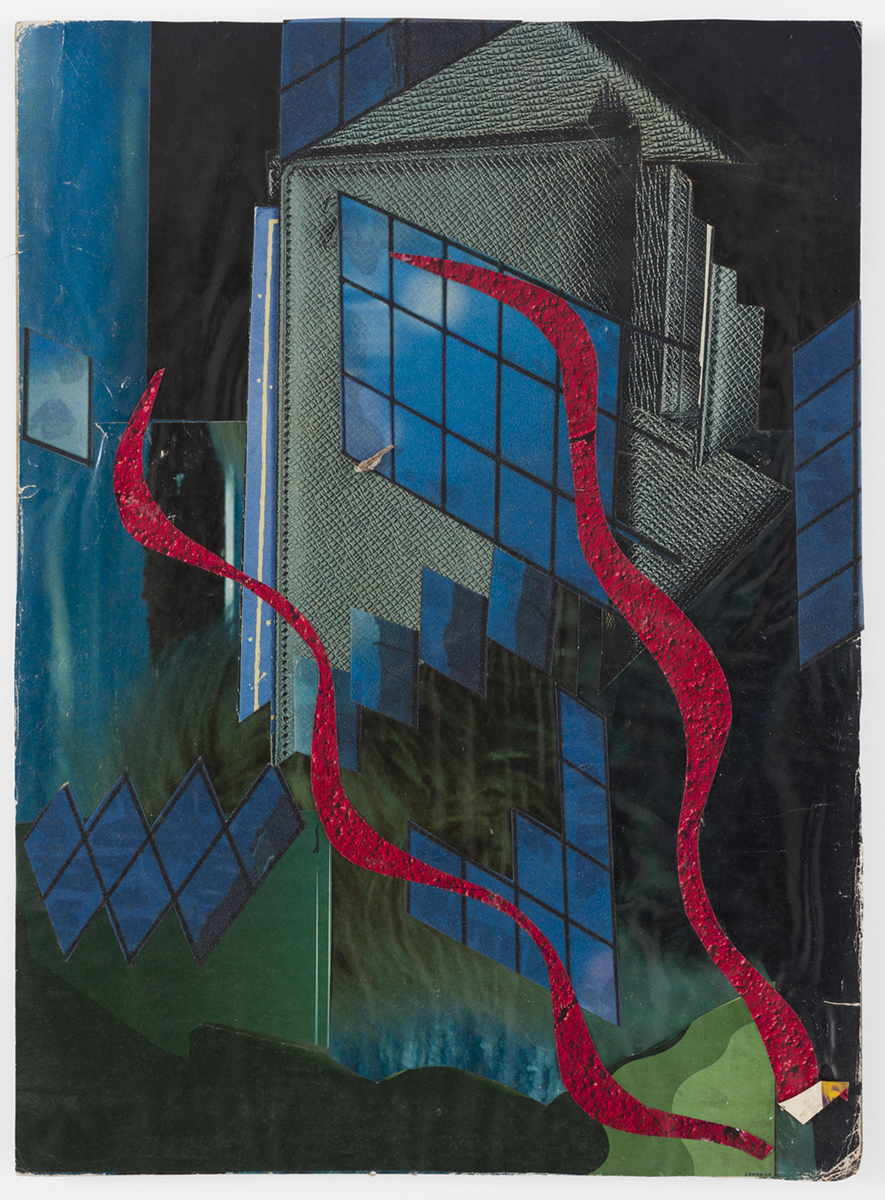
At Karma International, Zürich, Wild’s work offered glimpses of possible presents and futures
Elisabeth Wild’s European solo debut is nothing if not quietly seductive. Quietness, nevertheless, was not typical of her lifestyle: born in post-Habsburg Vienna between World Wars, Wild fled with her family to Argentina during Nazi Germany’s annexation of Austria. Under the shadow of Juan Perón’s policies, in 1962 she escaped again, to Basel, only to (eventually) return to South America during the mid-90s, joining her artist daughter Vivian Suter in Panajachel, Guatemala. A tropical shell, tossed about and occasionally endangered by severe weather, indigence, world events and local crime organisations, she died earlier this year, aged ninety-eight.
In Guatemala she had adopted geometrically inclined papier collé, snipping from art, fashion and architecture magazines at a time when the modernist diatribes the technique once ignited were long distant. Displacements, appropriations and recontextualisations had by now naturalised montage, as had the cut-and-paste aspects of home computers and visual pop culture. If anything, Wild was inadvertently closer to the aesthetics of hauntology – popularised circa 15 years ago and deriving from a neologism by Jacques Derrida – which sees in collage a device for extracting unexpressed, ‘spectral’ potential in narratives of the past.
As showcased here, Wild’s work also offers glimpses of possible presents and futures: her arrangements depict an angular and quasi-abstract world in which social housing flirts with postmodernism; a carnivalesque brutalism has prevailed and landscapes are populated by totemlike structures. The compositions, all untitled, render an otherworldly, intimate synthesis of the major avant-gardes of the century she spent across the Atlantic, liberating the constitutive pieces of the collages from glossy context and temporal situatedness. The show’s curator, Adam Szymczyk, who first championed Wild in a duo exhibition featuring her and her daughter’s work at Kunsthalle Basel in 2014, has arranged this show as an orderly picture gallery spreading horizontally and vertically on an aquamarine, window-facing wall – a nod to the artist’s taste for lively backdrops – in what seems an allusion to a calendar (Wild made one work per day, as if to mark the passage of time). Or it could resemble a surreal, intimately personal panorama to be glimpsed through metaphorical ‘openings’ in a boundary wall.
Elisabeth Wild at Karma International, Zürich, 12 September – 31 October